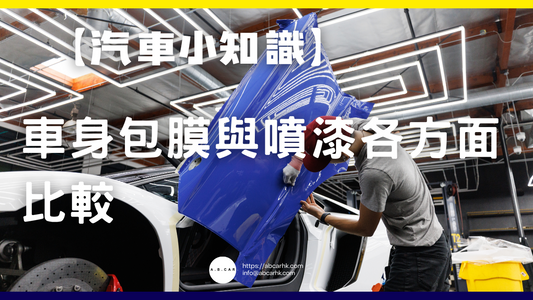[Food Tips] What is the "One Bowl, Two Pieces" Hong Kong Dim Sum? The Origins and Wisdom of Tea Culture

🫖 Why is Hong Kong dim sum served as "one bowl, two pieces"? The origins and wisdom of tea culture
Every time I go to yum cha, I hear the older generation say, "Here, one bowl, two pieces!" 🤩 So what does this saying really mean? Why is Hong Kong dim sum so inseparable from "one bowl, two pieces"? There's a lot of history, culinary wisdom, and cultural heritage behind it. Let me break it down for you today!
📜 The historical background of "One Cup, Two Pieces"
1. Originated from teahouse culture
- "Yi Zhong" refers to a cup of tea, that is, a pot of tea.
- "Two pieces" refers to two kinds of dim sum.
- In the early days, Cantonese people's "drinking tea" was not a luxurious meal, but a simple pot of tea with a few dim sum, which was both satisfying and relaxing.
2. Guangzhou in the late Qing Dynasty and early Republic of China
- Teahouses already existed in Guangzhou in the late Qing Dynasty, where workers and business travelers would go to rest.
- They usually just order a pot of tea and two baskets of dim sum, which is simple, cheap and filling.
- Gradually, the "one cup and two pieces" tea drinking pattern was formed.
3. Hong Kong’s Heritage
- As Cantonese people moved south to Hong Kong, teahouse culture was introduced along with them.
- "One cup and two pieces" has become a part of Hong Kong people's daily life and even a synonym for tea drinking.
🧪 Why "One Bowl, Two Pieces"?
1. Affordable
- In the old days, drinking tea was a pastime for the common people, and people did not eat meat or fish.
- A pot of tea + two baskets of dim sum, the price is affordable and everyone can afford it.
2. Eat a balanced diet
- Tea can remove greasiness and aid digestion, while snacks can provide a feeling of fullness.
- The aroma of tea and the salty and sweet taste of the dim sum complement each other, forming a perfect combination.
3. Social needs
- Drinking tea is not only a meal, but also an occasion for chatting and doing business.
- "One cup and two pieces" is quite casual, no need for too much fanfare, just sit down and enjoy it slowly.
4. Habits and Culture
- "One cup and two pieces of tea" later became a fixed saying, symbolizing the leisurely and friendly nature of tea drinking culture.
- Even though people today order many baskets of dim sum, "one pot and two pieces" is still synonymous with drinking tea.
🌟 Features of "One Bowl, Two Pieces"
1. A cup of tea🫖
- Common teas available in teahouses include Pu'er, Tieguanyin, Fragrant Tea, Shoumei, etc.
- Tea can relieve greasiness and is a perfect balance when paired with fatty dim sum (such as siu mai and chicken feet).
2. Two dim sum 🥟
- “Two pieces” does not necessarily mean two pieces, but refers to “several pieces of dim sum” in general.
- Common classics include shrimp dumplings, siu mai, barbecued pork buns, rice rolls, etc.
- The dim sum portions are small, making it convenient to try a few.
3. Tea atmosphere 🛎️
- The teahouse was bustling with people, and the dim sum lady pushing the cart was shouting out her wares.
- "One cup and two pieces" represents a leisurely attitude towards life.
🍽️ Why has it become a classic?
1. Popularization
- The price is affordable and everyone can afford it, forming a popular culture.
2. Pace of life
- Hong Kong people lead busy lives, and drinking tea provides a brief moment of leisure.
- "One cup and two pieces of tea" is the most relaxing way to drink tea.
3. Internationalization
- As Hong Kong people immigrated overseas, "drinking tea" and "one cup and two pieces" spread throughout the world.
- When foreigners go to Chinatown for dine-in tea, the first Cantonese phrase they learn is probably “一盅两套” 😆.
🍤 Modern Variations
- Today, yum cha is no longer just "one cup and two pieces of dim sum". Many families will order more than a dozen baskets of dim sum to feast on.
- However, there are still some elders who stick to the traditional method of "one pot of tea and two baskets of dim sum", which is nostalgic and simple.
- Some high-end restaurants have even launched a "refined version of one pot and two pieces" to upgrade the traditional concept.
💡 Editor's Summary
Hong Kong-style dim sum is known as "one bowl and two pieces," which is actually the result of history, economics, and cultural habits :
- A pot of tea to relieve greasiness and maintain health ☕
- A few dim sum to fill your stomach and save money🥟
- Meet social needs and become a part of people's daily life
- It symbolizes the Cantonese people's culinary wisdom and leisurely attitude.
For me, "one cup, two pieces" isn't just a meal; it's a lifestyle . The moment you sit down, slowly pour your tea, and pick up your shrimp dumplings, you've already experienced the essence of Cantonese tea drinking.
👉 Next time you’re drinking tea, why not tell your friends, “Here we go, one cup and two pieces, let’s enjoy it slowly!” This phrase is actually the best footnote to Guangdong’s tea drinking culture🫖🥟✨.



